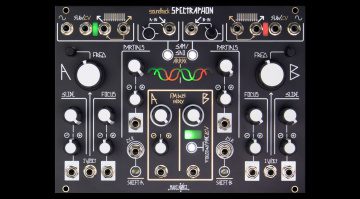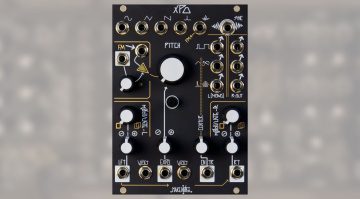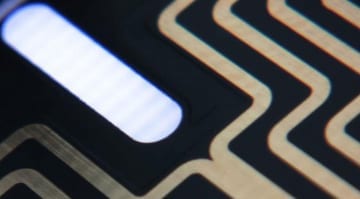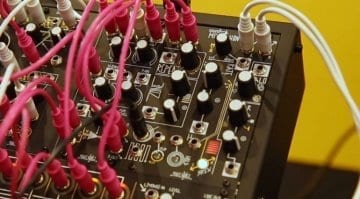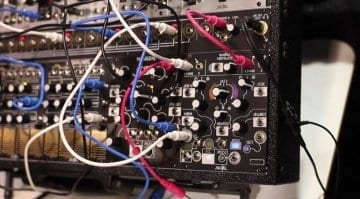Superbooth 23: Make Noise Spectraphon dual Spectral Oscillator
Pulling on real-time spectral analysis and resynthesis Spectraphon creates new sounds from existing sounds. It takes inspiration from many places including the Buchla 296 and 259.
Spectraphon
This sees the birth of a new digital hardware platform for Make Noise. It pushes the resolution and noise floor in two different directions and gives the perfect framework for Soundhack’s Tom Erbe DSP code to be unleashed.
Make Noise says its inspiration comes from:
…classic electronic musical instruments of the past, including spectral processors, additive synthesis, vocoders, and resonators especially the Buchla 296 and Touché, but it takes a physical form more resembling the classic analog dual complex oscillator in the lineage of the Buchla 259 and the Make Noise DPO.
So, let’s see if we can work out what it does. Spectraphon is laid out to have two almost identical sides. It houses two digital oscillators connected to eight outputs, two inputs, two gates and ten CV inputs. It produces sound through Spectral Amplitude Modulation (SAM) based on the continuous analysis of the audio at the input. These are stored in Arrays that the Spectral Array Oscillation (SAO) uses to create oscillations. Each VCO can use either SAM or SAO, or a combination. Are we getting it so far? No, me neither.
Looking deeper
What we need is a video!
You are currently viewing a placeholder content from YouTube. To access the actual content, click the button below. Please note that doing so will share data with third-party providers.
Nope, that’s not of much use either. I’m not sure what sound is being generated by anything, but it does sound very cool. Actually, later in the video, it does start to provide some demonstrations that get very interesting. Maybe there’ll be a shop floor demo from Superbooth where we can get a bit more explanation. Failing that, the excellent Sarah Belle Reid has a video scheduled for Friday evening all about the Spectraphon, which will undoubtedly shed the sort of light that we need.
You are currently viewing a placeholder content from YouTube. To access the actual content, click the button below. Please note that doing so will share data with third-party providers.
Anyway, back to trying to interpret the techno-babble from the Make Noise website.
So each oscillator can make noises in one of two ways; the aforementioned SAM and SAO. SAM uses a set of harmonics which are modulated by audio from the input. You can also store them for later use in an array which is where SAO gets its noise from. You have controls over Slide and Focus, Partials and Timbre Gates for the odd and even harmonics. There’s also an FM Bus with Follow and Sync modes.
I am none the wiser.

 4,4 / 5,0 |
4,4 / 5,0 | 

